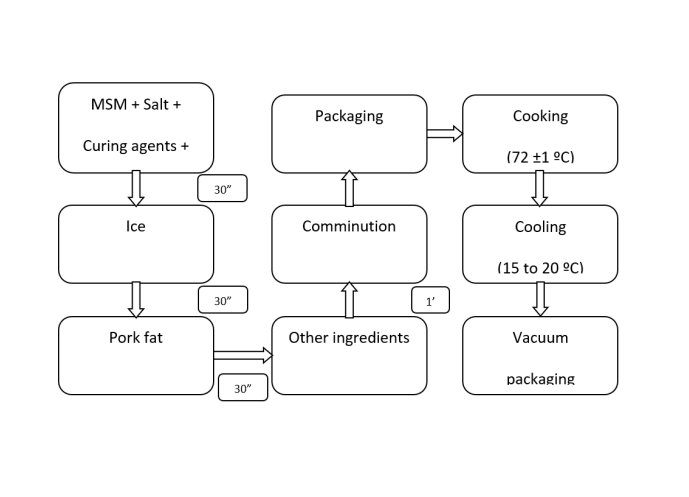Introduction
Foreign bodies in the external auditory canal (EAC) are encountered mainly in children, who put foreign objects in the ear out of curiosity or it happens by accident. The list of potential foreign bodies is very wide, and the size, nature and consistency of the foreign body are limiting factors for entering the external auditory canal. Different foreign bodies, such as seeds, marbles, stones, jewelry parts, bobby pins, as well as living foreign bodies, insects and their larvae are described in literature [1].
Finding of the foreign bodies in external auditory canal are relatively common in medicine. In contrast, foreign bodies in the middle ear are very rare [2]. They occur mostly due to the violent perforation of the tympanic membrane and displacement from the external ear canal into the tympanic cavity. This can cause damage of the eardrum and ossicles, leading to the middle ear inflammation. If the eardrum perforation heals spontaneously, conductive hearing loss may persist as the only sign of damage, sometimes even years after the injury [3].
In some cases of „alternative” treatments, „forgotten” or unrecognized foreign bodies of different nature may remain in the external auditory canal. Various pathological changes with or without clinical manifestations may form over time due to the reaction of the surrounding tissue. There have been no comparative studies performed to guide the clinician as to which removal method best suits a particular clinical scenario. A number of foreign bodies found in the EAC are spherical, and cannot be retrieved with forceps as could be done with those irregularly shaped. In those cases, a single failed attempt of foreign body removal may result in complications (laceration, tympanic membrane perforation), but, also more impaction of the body, requiring removal under general anaestesia.
The aim of this article is to present a case of the foreign body in the external auditory canal described as a pseudotumor of the middle ear, as well as to point out diagnostic and therapeutic aspects of this problem.
Case report
An 8-year-old girl was hospitalized several times in our department due to the surgery of left-sided chronic otitis media. Mastoidectomy and posterior atticotomy were performed during initial hospitalization. Postoperative course went well with satisfactory local findings and improved hearing function. Six months later, she was admitted for the second act of the left-sided tympanoplasty. However, two months prior hospitalization, symptoms regarding the right ear appeared: sense of fullness, gradual hearing loss and occasional pain. Therefore, she was treated in the regional hospital with local antibiotics and short-term oral antibiotics therapy. Last swab of the right ear revealed a fungal infection.
On admission to the clinic, she supposedly had no complaints of the right ear. A local finding on the left ear was satisfactory. She had dry central perforation in the anterior lower quadrant, and a hearing has improved significantly compared to preoperative findings. However, an otoscopic finding on the right indicated the presence of “tumefaction” in the external auditory canal with a surface that was markedly hyperemic.
MSCT of the temporal bone showed the presence of growth, described as a “polypoid mass” located in tympanic cavity, expanding from the promontory towards the lumen of the external auditory canal (Figure 1).
Audiology findings showed right-sided mixed hearing loss (Figure 2).
Consequently, surgery of the right ear was performed, instead of initially planned left ear. The exploration of the right ear discovered a mass, pointed to the foreign body, encapsulated with surrounding proliferative tissue. The mass was removed, and pathohistological findings confirmed the presence of the foreign body (Figure 3).
Additional medical history indicated the possibility of remained protective cap used for swimming, few months ago. The child was restrained, and the mother denied knowing about it. After removing the mass, a very repressed, retracted, but mobile eardrum was found. Except for slightly thickened mucosa, no pathological changes were found. Postoperative hearing function has been rapidly improved, resulting in recovery of hearing function of the right ear on follow-up examination. Over the next few months, the findings were satisfactory.
Discussion
The frequency of foreign bodies in the external auditory meatus as well as their characteristics (material, shape and size) have been changing over time. In earlier periods, organic material (grains, seeds) was the most common, while nowadays the range of foreign bodies have been expanded to various structures (batteries, buttons, parts of toys). The occurrence of insects is becoming frequent in some parts in the world [4].
Clinical features, diagnostic and treatment procedures depend on the characteristics of the foreign body. The presence of the foreign body should be considered in patients who develop clinical features and symptoms such as pain, ringing in the ears, severe infections, dizziness and hearing loss. In addition, none of these symptoms may be present.
Chalishazar et al. [5] showed that 25 of 37 children with the foreign body in external auditory meatus had associated middle ear pathology compared to the control group. Schulze et al. [1] also showed that the inflammation of the middle ear was the most common associated pathology in these patients. Otitis externa, hematomas, granulation tissue and perforation of the eardrum are common complications of the foreign body presence in the external auditory canal, but sometimes extra- and intracranial complications can develop.
Goldman et al. [6] describes the case of a patient who developed mastoiditis and brain abscess as a consequence of the presence of the foreign body.
Burke et al. [7] showed a case of a 12 year-old girl with mastoiditis and meningitis due to the presence of cotton fiber in the external auditory meatus. The granuloma around the foreign body is the result of permanent inflammation that is associated with the type of material, in our case the silicone used to make earplugs.
Harris CK et al. [8] presented a case of a 9-year-old child with a polypoid mass in the external auditory canal, and pathohistologically it turned out to be the foreign body with proliferating granulation tissue. He showed that the foreign body reaction had the ability to erode the bone of the external auditory canal. The identification of foreign bodies in the external auditory canal requires, first and foremost, clinical suspicion. Clinical examination, otomicroscopy or otoendoscopy, audiology and CT diagnostics are all part of the diagnostic protocol. This is especially important in ambiguous situations or when some treatment has already been implemented, as in our case.
Described cases of unreported, forgotten or overlooked foreign bodies are important for several reasons. Detailed history is very useful in the diagnostic terms, which was incomplete in our case. Just when the signs of secondary infection appeared, therapy was based on the swab findings. The appearance of granulation tissue around the foreign body contributed to the initial description of CT scans as a pseudotumor of the middle ear.
Differential diagnosis of the foreign body includes several rare, but potentially dangerous conditions, like glomus tumor or other serious pathologic conditions. Knowledge of the differential diagnosis is important in avoiding a delay in establishing the diagnosis and potential morbidity.
Therefore, precise conclusion is only possible with surgical exploration of tympanic cavity, biopsy or complete removal. In our case, the origin of the foreign body has been identified intraoperatively and confirmed by pathohistology after removal.
The quick diagnostic and therapeutic approach prevented the occurrence of possible complications that sometimes could be very serious.
In modern literature, there are very few cases of foreign bodies seen in the middle ear. Sims and Nelson [2] showed four cases of impressions of foreign bodies in the timpanic cavity with subsequent chronic inflammation. Skandour et al. [9] revealed that the presence of the foreign body can remain unnoticed a longer period of time, with the hearing loss and a complete recovery after the extraction. Eleftheriadou et al. [3] described the case of metallic foreign body in the middle ear in a patient who worked as a welder, who got a metal splinter pierced into external auditory meatus, eardrum, and reached the tympanic cavity. Karimnejad K. et al (2017) reported a large review of 1197 pediatric patients with external auditory canal foreign bodies, of which 750 (63%) were presented primarily to the emergency department. Successful removal was performed in 92.9% and 67.9% of cases in otolaryngology clinic in and the emergency department, respectively. Also, complications were found in 35.7% and 5.0% of patients undergoing removal in the emergency department and in the otolaryngology clinic, respectively [10].
With this work we wanted to point out the possibility of the presence of the foreign body as the cause of recurrent inflammatory and even pseudotumor reactions in the body.
It is often not possible to perform identification and analysis of the foreign body, especially after its delayed removal from the body. We think, however, that it would certainly be of clinical interest to identify and analyze the structure of the foreign body, even speculatively. The composition of the foreign body affects the possibility of its radiological identification, and it also determines the biological reaction to its presence.
Conclusion
Ear foreign bodies are relatively common in pediatric population. Given that the medical history is sometimes not reliable, the clinical and radiological interpretation of pseudotumor in the external auditory canal or middle ear must include this possibility in the differential diagnosis as well. Surgical exploration is necessary to make the definite diagnosis and to avoid potential complications.







